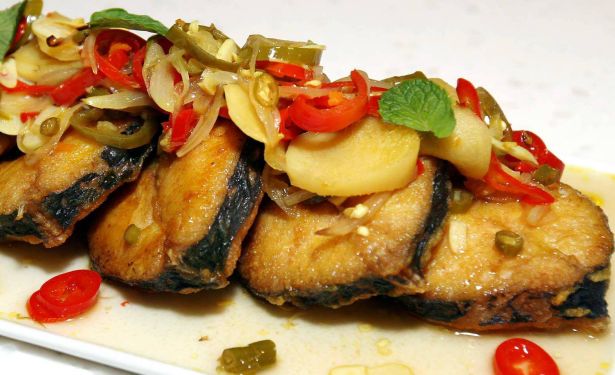Recipe Description
I’ve made red bean paste since I was a kid when my mom taught me to make Shanghai pancakes. Red bean paste starts with turning sugar into caramel in oil and adding the blended red bean to sauté until dry and glossy. The end product somewhat resembles the source, and I had been told that lotus paste is made using the same concept. But lotus paste has always been a culinary mystery for me, especially how the opaque and hard lotus seed can become that translucent filling that is smooth and decadent.
There are a lot of resources for making lotus paste and I knew I just had to try one out. The lady at the store told me that I should use Seong Lin, which are whole lotus seeds with skin and germ, and are supposed to be more fragrant. But I opted for the more convenient lotus seeds which have already been peeled and degermed. I just had to pick over the seeds to remove any germs that were left inside.
I’m familiar with this type of lotus seed because my family used to make tong shui with it. The trick in getting soft lotus seed is to pour it into boiling water and immediately bring it to a boil without soaking. And that’s exactly what I did for this recipe. Blending the lotus seeds is a bit tricky because they are so sticky that the blender blades get stuck. So I had to blend them in smaller batches in a food processor.
The rest of the process was surprisingly similar to making red bean paste, except for the additional sugar, oil, and maltose. The result of this first attempt to produce lotus paste was a resounding success. Reversely, what I thought was the simpler component of the mooncake turned out to be more difficult. I found the pastry so sticky that I had to constantly dust my hands, the work surface, the rolling pin and the plastic mould with additional kao fun.
Perhaps because I didn’t have time to leave the lotus paste overnight, it was so soft that I could not pinch the pastry dough together without squeezing out the contents. My solution is to crimp two pieces of dough together and cut off the excess with the rim of the mould. It worked out beautifully for me but I think that may not be the traditional way of making mooncakes. Do remember to keep snow skin mooncakes in the refrigerator because they will become spoilt.
Recipe Ingredient
- Filling
- 600g lotus seeds
- 600ml boiling water
- ½ tsp lye solution
- 400ml peanut oil
- 600g sugar
- 1 tbsp maltose
- 8 salted egg yolks
- Snow Skin
- 10g dried butterfly pea flower
- 300ml boiling water
- 225g kao fun or toasted glutinous rice flour + additional for dusting
- 200g sugar
- 1 tbsp condensed milk
- 3 tbsp shortening
Instructions
- Pick out the green germ from lotus seeds and place it into a pot or pressure cooker.
- Pour in boiling water and add lye solution. Boil for one hour on the stove over medium heat or pressure cook for 20 minutes until soft.
- Put them into a blender with some water and blend into a thick paste.
- Heat the wok with half the oil and half the sugar. When sugar melts and turns light golden, add the blended lotus paste and stir constantly until smooth and thick.
- Add in the remaining sugar and oil, stirring continuously until the paste becomes glossy.
- Finally, add the maltose and stir until combined. Leave to cool completely or better overnight before use.
- Separate yolks from the salted egg and steam over medium heat for 10 minutes until cooked. Set aside to cool before use.
- Steep butterfly pea flower in boiling water for 30 minutes to extract the colour. Strain blue tea into a pot, then add sugar and simmer until sugar is dissolved.
- Stir in condensed milk and leave to cool completely.
- Sift kao fun into the cooled tea solution. Add shortening and knead into a smooth dough. Set aside, covered, for 15-20 minutes to rest the dough.
- Dust the work surface and equipment with additional kao fun. Roll the dough into a log and divide the dough into about 20 equal portions. Roll out each portion into a disc with a rolling pin, dusting with more kao fun to prevent sticking.
- Make a bowl shape with one of the rolled discs, and fill it with about 50g of lotus paste.
- Press a steamed egg yolk into the centre and smother it with another 25g of lotus paste. Cover the filling with another disc of dough and crimp the edges together to seal in the filling to get a shape that resembles a flying saucer.
- Place the flying saucer into the plastic mooncake mould leaving the flat piece to overhang the rim of the mould.
- Turn the mould onto a hardwork surface and press the mould down, using the rim to cut off the excess dough.
- Remove the excess dough to be rolled again later. Press the plunger down to imprint the mould pattern and shape the dough into the mooncake shape.
- Then lift the mould and gently push the plunger to extract the finished mooncake.
- Keep mooncake chilled at all times before cutting to serve.









